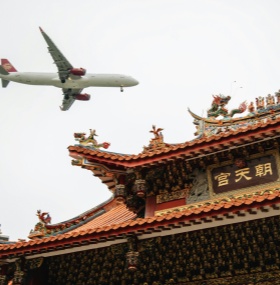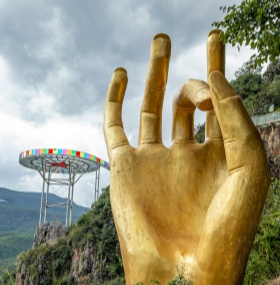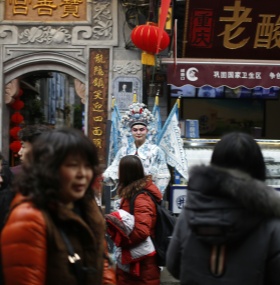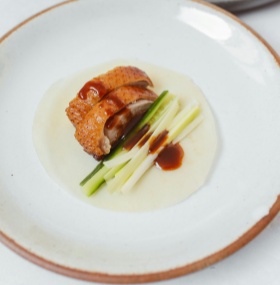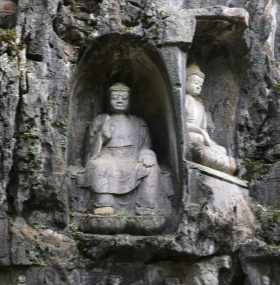China’s food culture is as vast and diverse as the country itself, offering a rich tapestry of flavors, textures, and colors that make it a photographer’s paradise. From the mouthwatering street foods of Beijing to the elaborate banquet dishes of Canton, Chinese food is a visual feast that tells the story of its rich cultural heritage. Whether you're a seasoned food photographer or a travel enthusiast looking to capture the soul of China’s culinary landscape, here are some key dishes and expert photography tips to help you master the art of food photography in China.
1. Hot Pot: A Fiery Feast for the Eyes
Hot pot is a quintessential part of Chinese cuisine, especially in regions like Sichuan and Chongqing, where the spice level is notoriously high. The bubbling, aromatic broth and the wide array of ingredients offer unique opportunities for dynamic photography.
Photography Highlights:
The Steam: Hot pot is characterized by its aromatic steam rising from the broth, making it a great subject for capturing motion and depth. The swirling steam can add texture and movement to your photos.
The Variety of Ingredients: Capture the colorful spread of vegetables, meats, and tofu that make up the hot pot. Each ingredient brings its own vibrant hue, which creates a visual symphony.
The Sizzle: Whether you’re photographing a simmering pot of broth or ingredients being dunked into the pot, capturing the energy of the hot pot experience is essential.
Photography Tips:
Shoot from Above: A bird’s-eye view can show off the variety of ingredients beautifully, especially in a large communal hot pot.
Use Slow Shutter Speed for Steam: A slower shutter speed will help you capture the steam in motion, giving your photos a soft, dreamy look.
Focus on Details: Use a macro lens to capture the texture of individual ingredients, such as the thin slices of beef or the crispy tofu.
2. Dim Sum: Delicate and Colorful
Dim sum is a staple of Cantonese cuisine, consisting of small, bite-sized dishes that are served in steaming bamboo baskets. These miniature works of art are often colorful, intricate, and beautifully presented, making them perfect subjects for photography.
Photography Highlights:
Translucent Dumplings: Dishes like shrimp dumplings (har gow) and crystal dumplings showcase a delicate, translucent quality that makes for stunning close-up shots.
Bamboo Steamers: The traditional bamboo steamers, with their rustic texture, provide a perfect contrast to the delicate dim sum inside.
Vibrant Ingredients: The colorful vegetables, meats, and garnishes used in dim sum make for a visually dynamic spread.
Photography Tips:
Use Soft, Diffused Lighting: Dim sum has a subtle, delicate aesthetic, and soft, diffused lighting can help you capture its beauty without harsh shadows.
Experiment with Close-Ups: Use a macro lens to focus on the fine details—such as the pleats of dumplings or the filling inside a bun.
Capture the Full Experience: Don’t forget to photograph the complete dining experience, including the steaming bamboo baskets, the sauces, and the tea cups.
3. Peking Duck: A Golden, Crispy Icon
Peking duck is one of China’s most famous dishes, known for its perfectly crispy skin and tender meat. It’s often served with pancakes, hoisin sauce, and fresh vegetables, making it a feast not only for the palate but also for the eyes.
Photography Highlights:
Crispy Skin: The golden, crispy skin of the duck is a highlight. Capturing the shiny texture and intricate details of the skin is key to showcasing the dish’s perfection.
Carving Action: The traditional carving of the duck adds dynamic motion to your photos, especially when the chef expertly slices through the crispy skin and reveals the tender meat inside.
The Accompaniments: Peking duck is typically served with pancakes, scallions, and hoisin sauce, all of which create a beautiful, colorful composition.
Photography Tips:
Use Side Lighting: Side lighting will help highlight the glossy, crispy skin, bringing out its texture and sheen.
Capture the Action: If possible, photograph the duck being carved. A high-speed shutter can help freeze the motion and capture the chef’s skillful carving technique.
Wide Angle Shots: Use a wide-angle lens to capture the entire table setting and the arrangement of the accompaniments for a full scene.
4. Dumplings: Symbol of Chinese Tradition
Dumplings are a staple in Chinese cuisine and are especially popular during Chinese New Year. Whether boiled, steamed, or pan-fried, dumplings are a symbol of wealth and prosperity. Their small, round shapes make them ideal subjects for close-up photography.
Photography Highlights:
The Filling: The contrast between the soft, tender dumpling skin and the flavorful filling inside makes for compelling photography.
Steamed or Pan-Fried: Steamed dumplings have a soft sheen, while pan-fried dumplings have a crispy, golden brown exterior—each requiring different lighting techniques.
Arrangement: Dumplings are often served in clusters, either on a platter or in a bamboo steamer, which can create visually interesting compositions.
Photography Tips:
Macro Shots for Texture: Use a macro lens to capture the texture of the dumpling skin, highlighting the soft folds or the crispy surface.
Use Natural Light: Soft, natural light works well for capturing the soft texture of steamed dumplings, while direct light is better for crispy, pan-fried dumplings.
Capture Movement: For steamed dumplings, try to capture the moment when they are lifted from the steamer, with steam rising from the hot, delicate pockets.
5. Xi'an’s Yangrou Paomo: A Rustic, Hearty Meal
Yangrou Paomo, a hearty lamb stew served with crumbled flatbread, is a classic dish from Xi’an. The rich, golden broth, tender lamb, and rustic bread chunks create a visually appealing dish with many textures and layers.
Photography Highlights:
Rich Broth: The golden hue of the broth contrasts beautifully with the darker lamb meat and crumbled bread.
Textural Layers: The bread chunks soak in the broth, becoming soft and almost transparent, while the lamb remains tender and juicy.
Authentic Setting: Xi'an’s street food culture and local eateries provide the perfect setting for capturing the dish in its true cultural context.
Photography Tips:
Play with Depth: Use a shallow depth of field to focus on key elements of the dish—such as the lamb or bread—while softly blurring the background.
Highlight the Steam: Capture the rising steam from the hot stew to add movement and energy to your shots.
Contextual Shots: Consider including the surroundings, such as traditional Chinese crockery or bustling market scenes, to give a sense of place.
Related Posts
Create Your Customized Trip
Take about 2 minutes to fill the form to tell us how you like to travel, and get a reply within 1 working day.


